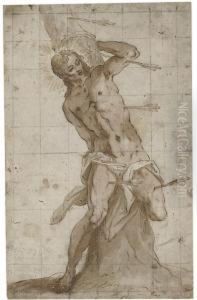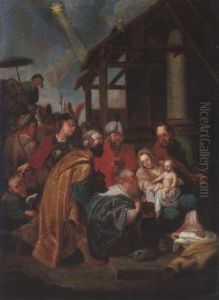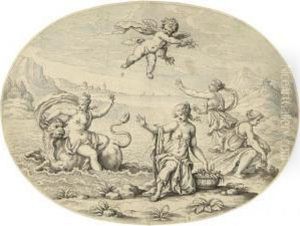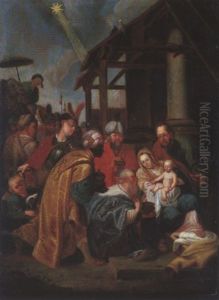Hans Friedrich Schorer Paintings
Hans Friedrich Schorer was a notable figure in the world of art, whose contributions, albeit not widely recognized in the mainstream art history, hold significant value in the study of Renaissance and early Baroque periods in Southern Germany. Born in 1530, Schorer's life and work were deeply embedded in the cultural and artistic transformations of his time, reflecting the complex interplay between religious, social, and artistic currents of the 16th century.
Schorer's artistic journey began in the context of a Europe undergoing profound changes. The Reformation, spearheaded by Martin Luther in 1517, had a profound impact on the religious and cultural landscape, influencing not only theology and church practices but also the arts. As a result, artists like Schorer found themselves navigating a world where art served not just an aesthetic purpose but was also imbued with religious and political significance. Schorer's work, therefore, must be understood against this backdrop of shifting paradigms, where the sacred and the secular began to intertwine in new and complex ways.
Though detailed records of Schorer's training and early career are scarce, it is believed that he was influenced by the Swabian school of painting, known for its detailed and emotive religious scenes. His work is characterized by a meticulous attention to detail, a vivid use of color, and an ability to convey deep religious sentiment, traits that align him with the broader trends of the period. Schorer's most significant contributions were likely in the form of altarpieces and religious panels, which served as focal points in churches and conveyed complex theological themes through visual means.
Throughout his career, Schorer navigated the challenges of an artist's life during the Reformation, including the shifting patronage systems. As the Protestant Reformation took hold, traditional Catholic patrons became less prevalent, and artists increasingly relied on secular commissions and Protestant patrons. This shift is reflected in the thematic evolution of Schorer's work, which may have included more portraits and secular subjects alongside his religious compositions.
Schorer's legacy, while not as prominent as some of his contemporaries, is an important part of the tapestry of Renaissance and early Baroque art in Germany. His ability to blend deep religious feeling with the emerging aesthetics of his time offers valuable insights into the transitional period of European art. Hans Friedrich Schorer died in 1602, leaving behind a body of work that, though not extensively documented, contributes to our understanding of the complex interplay between art, religion, and society in 16th century Europe.



